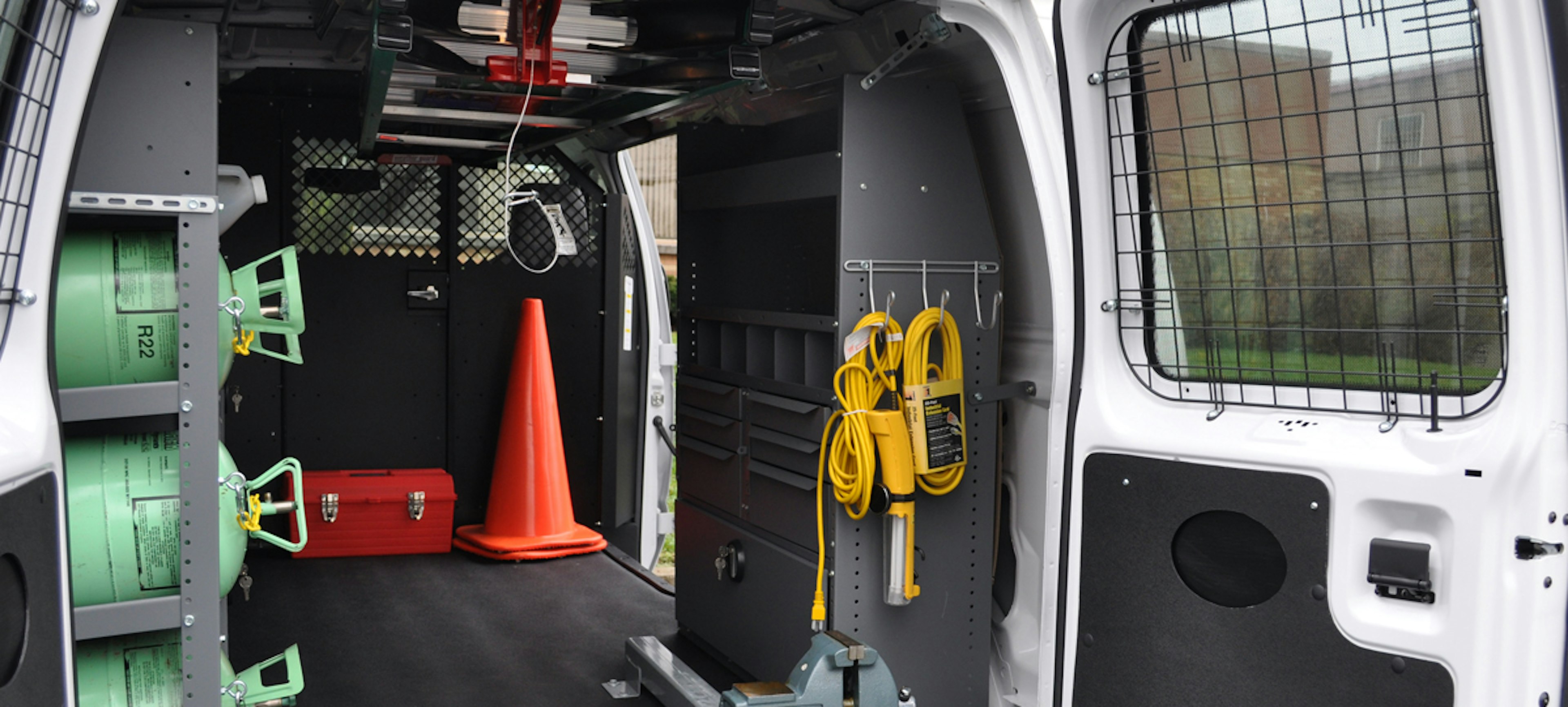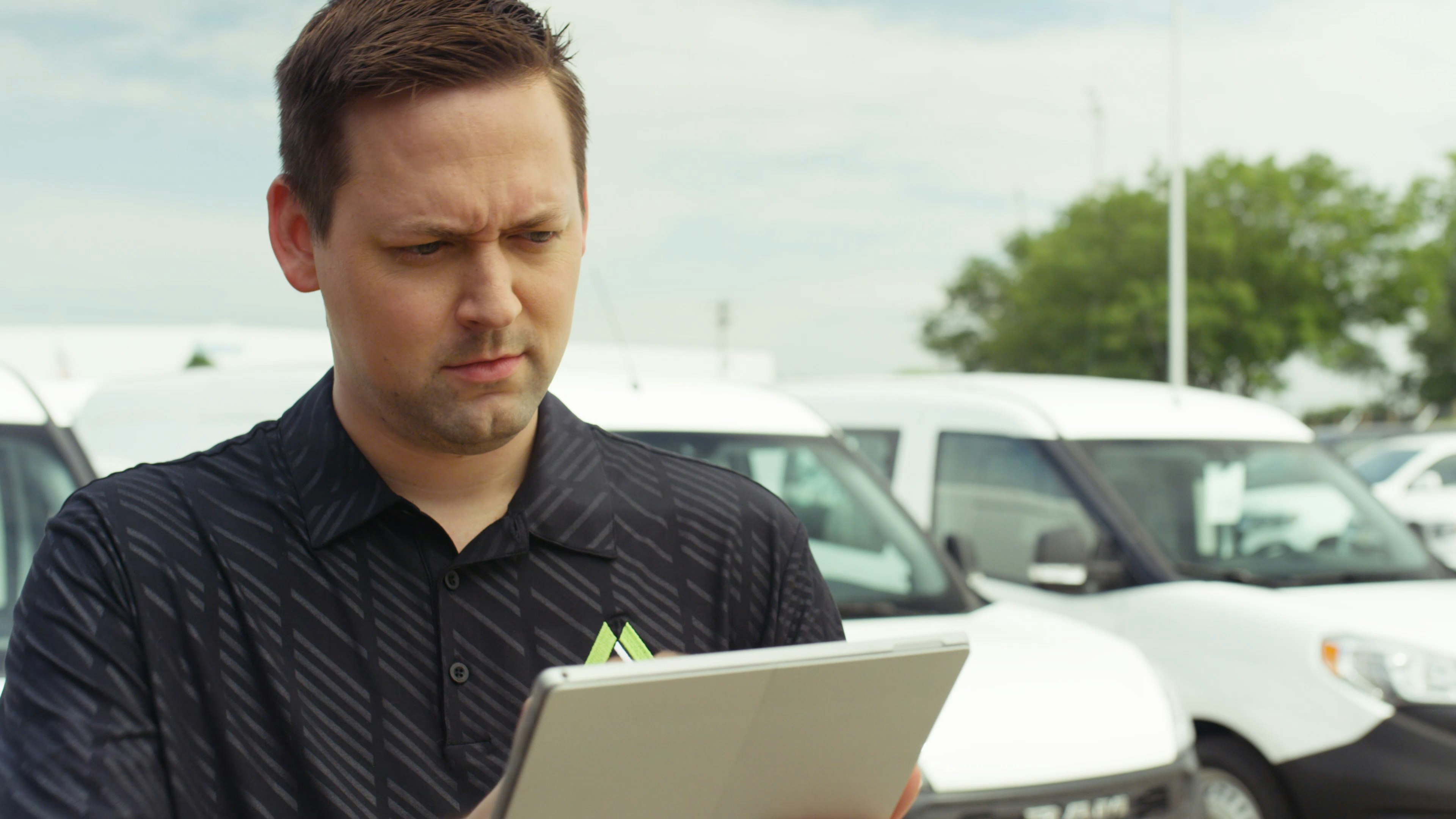Inventory management, fuel efficiency, maintenance costs, retaining talent, vehicle acquisition, vehicle life-cycle strategy… No matter the size of the fleet, the challenges of fleet management are the same. The good news is that there’s a solution to these challenges that can be found by right-sizing the vehicle, upfit, or fleet. We’ve gathered the 6 most common and costly mistakes we see.
1. Managing a fleet of oversized sales vehicle
A classic case of “my laptop needs leg room”
- Look closely at how each vehicle in your fleet is being used. If a fleet vehicle has underutilized cargo or passenger space, often times the same job could be done with a smaller, more fuel-efficient vehicle. Right-sizing your sales team’s vehicles saves on vehicle acquisition costs and long-term fuel expense.
Ask yourself: Does your sales team carry other passengers? Do you have empty or under-utilized cargo space?
Tip: Compact cargo vans are a great solution for many sales teams and allow them to do their same job in a smaller vehicle. Click here to see how one business downsized their sales fleet’s vans to save thousands on fuel.
2. Overloading trucks and trailers past payload
A classic case of “sure it’s heavy, but it fits!”
- Not only are overweight loads are a safety concern to your driver and others on the road, but they also cause excess wear and tear on your vehicle. If you are replacing brakes and tires more often than the manufacturer’s recommended intervals it could be caused by an overloaded vehicle. Buying the right-sized truck up front can save thousands of dollars in maintenance costs.
Ask yourself: What equipment, parts, tools, and products will the vehicle be used to haul? Does your vehicle meet the payload requirements?
Tip: To identify your vehicle’s available payload use this equation: GVW (Gross Vehicle Weight) – Curb weight – Occupants – Alternative Equipment = Available Payload
3. Unorganized inventory
Classic case of “it’s in there somewhere”
- Service vans and box trucks are great for carrying around the necessary equipment and parts your team need to do their job. However, when the vehicle's cargo space is overcrowded and unorganized, inventory and equipment get lost and that can mean thousands of dollars wasted. Optimize the cargo area of your fleet vehicle by right-sizing for inventory management. An engineered upfit allows you to customize racks, shelving, and bins to organize and manage everything you need to do your job quickly and efficiently.
Ask yourself: How do you track/restock inventory and equipment? How do you store the inventory and equipment and ensure everything is where it should be?
Tip: Bins can be labeled with scan-able bar codes, allowing you to actively monitor inventory levels at all time.
4. REQUIRING DRIVERS TO DOUBLE AS CONTORTIONISTS
Classic case of “my job could be so much easier”
- A vehicle is a tool that your drivers use every day. Climbing in the back of the vehicle and straining to reach equipment or inventory are key signals the vehicle’s form does not meet its function. Avoid injuries and unhappy employees by right-sizing your vehicles and it’s upfit to accommodate the drivers who use them. Truck engineers can work with you to create an upfit that includes stairs, pullouts, organization, and lighting.
Ask yourself: What would your drivers change about their vehicles? Are there new trends in your industry you can incorporate to be more efficient and safe?
Tip: Adding a side-ladder rack is a great solution for high-top vans. View some of our truck teams recommendations
5. Every vehicle is unique
Classic case of “one size does not fit all”
- Managing a fleet of vehicles is even more difficult than usual when your vehicles are all different. A variety of vehicles can be useful in some scenarios, but when possible standardization of your fleet’s vehicles increases efficiencies and reduces inventory, training, and downtime.
Ask yourself: Can multiple delivery-requirements be met by right-sizing a few vehicles? Which vehicles aren’t being used as often?
Tip: Talk to all internal stakeholders across departments to align on what is required of the operators. You may find a solution there.
6. Unnecessary upgrades
Classic case of ”the first option is not the best option”
- Often times, the first vehicle option at a dealership is the option with the most features and benefits – which means extra cost. Buying directly from the manufacturer allows you to spec’ your new truck, van or car. Include options your vehicle needs and exclude the ones you don’t, enabling you to maximize every penny. Plus, the new vehicle warranty will cover any potential issues.
Ask yourself: Do you have a vehicle life-cycle strategy? Can you wait 4-6 weeks to replace vehicles?
Tip: More often than not, it’s more expensive to keep an aging vehicle in the rotation than it is to replace the vehicle. You pay more for reactive maintenance and you also miss out on the vehicle’s potential resale value. Planning ahead with a vehicle life-cycle strategy is a great way to avoid unnecessary costs and risks, and the extra effort can save significant money in the long run.
Do you fall into at least one of the traps laid out above? You’re not alone! Time and time again our clients are amazed by how much cost is saved by right-sizing their fleet to the specifications of the job and vehicles. (Here is an example of how one company saved thousands of dollars by optimizing their fleet’s vehicles.) Working with an experienced and established partner to help avoid these pitfalls saves time, money, and headaches.



